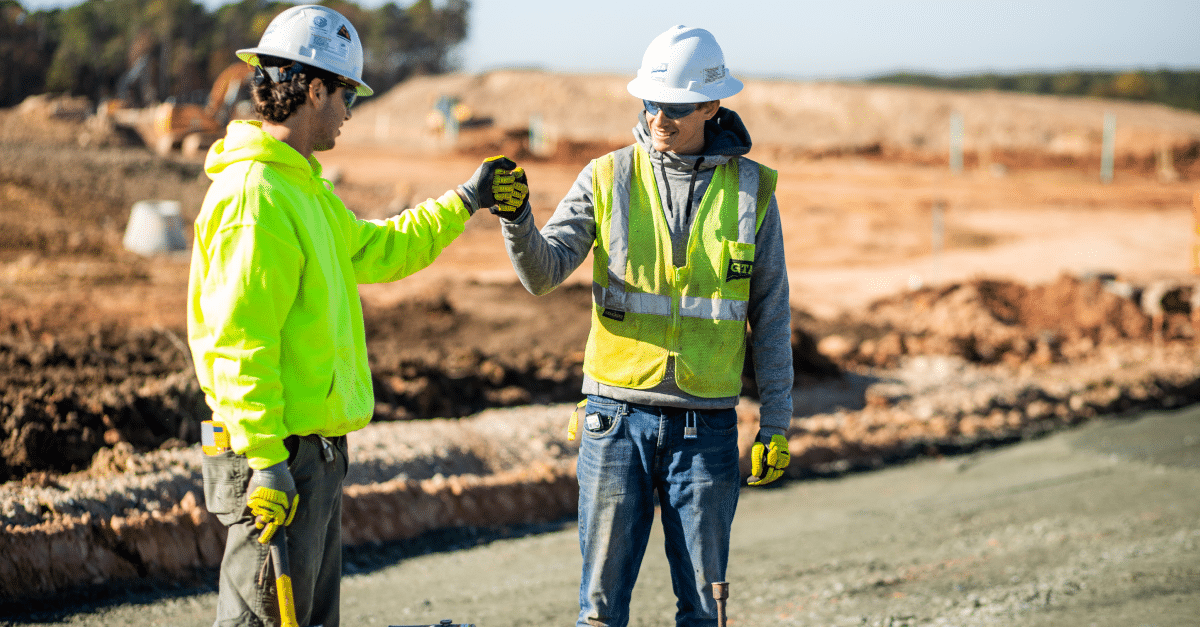Little Known Questions About Geotechnical Engineering For Construction Projects.
Little Known Questions About Geotechnical Engineering For Construction Projects.
Blog Article
Unknown Facts About Geotechnical Engineering For Construction Projects
Table of ContentsUnknown Facts About Geotechnical Engineering For Construction ProjectsThe smart Trick of Geotechnical Engineering For Construction Projects That Nobody is DiscussingThe 7-Second Trick For Geotechnical Engineering For Construction ProjectsSome Known Details About Geotechnical Engineering For Construction Projects Not known Facts About Geotechnical Engineering For Construction ProjectsThe 2-Minute Rule for Geotechnical Engineering For Construction ProjectsGeotechnical Engineering For Construction Projects Can Be Fun For AnyoneThe Best Strategy To Use For Geotechnical Engineering For Construction Projects
Corresponding with this boosted complexity comes geological and ecological factors that influence the design of the foundation, which is probably the most fundamental part of any development. People need to rely on that buildings, bridges, and highways will certainly stand the test of time. A Geotechnical engineer suggests on how a framework can best be supported offering its distinct circumstances What's concealed listed below the surface of the ground is likely the most important piece of info that a Geotechnical Engineer seeks.These examples are after that examined by the lab to determine soil make-up (Geotechnical Engineering for Construction Projects). The failure of sand, silt, clay, and other products existing in the soil, aids the engineer identify what unique attributes the site has and what the implications of those may be. Naturally dirt make-up is just one examination that can be done on samples
Our Geotechnical Engineering For Construction Projects Ideas
Based on these tests, there might be a lot more dirt borings that are drilled, or the engineer might have enough details from the first tests to make a recommendation to the customer on just how ideal to continue with their job. Results are usually reported through borings logs which show the soil composition and characteristics at a variety of midsts.
Geotechnical designers are liable for comprehending the homes of all-natural sources and utilizing this expertise to establish risk-free, affordable styles for construction tasks. It is a necessary component of any kind of civil engineering task, as it is made use of to determine the suitability of a site for building and to make sure the framework's security.
This consists of executing lab examinations on the samples and making use of geophysical approaches such as seismic refraction and electric resistivity studies. This data is used to assess the site's suitability for building and to establish the kind of structure that need to be used. Geotechnical design analyzes soil conditions, determines potential hazards, selects a suitable structure system for the proposed framework, and determines the best foundation design for an offered task.
An Unbiased View of Geotechnical Engineering For Construction Projects
The framework might end up being unstable or collapse without correct dirt stabilisation, bring about pricey repair work and potential injury. The stabilization procedure entails using different techniques to enhance the security of the dirt, such as compaction, grouting, and the addition of enhancing products. Without soil stablizing, the risks linked with construction tasks would be much higher, and the outcomes a lot less trusted.
It is a process utilized to boost the homes of dirts. Geotechnical engineers conduct site examinations to analyze the dirt's residential properties and recognize prospective risks. They additionally design structures and various other frameworks that require to be developed on the website, taking into consideration the dirt's qualities. They develop and carry out dirt stablizing strategies, such as adding cement, lime, or other stabilizing agents, to improve the soil's stamina and stability.
Geotechnical Engineering For Construction Projects for Beginners
Geotechnical engineers are important in aiding to make certain that soil stabilization is done properly so that the framework is secure and safe. Geotechnical design is additionally made use of to analyze dirt conditions and recognize prospective risks. This consists of examining prospective flooding, landslides, and other all-natural disasters that could affect the structure.
Geotechnical engineers use this knowledge to perform site investigations, soil, and rock testing, and to translate the results to identify the ideal style criteria for a job. This info is used to guarantee that the foundation, maintaining wall surfaces, slopes, and various other structures improved or within the subsurface materials have sufficient security and resistance to outside tons, such as quakes, wind, and water.
These structures call for a deep understanding of the actions of the subsurface materials, as well as the capacity to take care of the influence of excavation and building on Recommended Reading the surrounding setting. Geotechnical engineers use their knowledge to figure out the ideal layout criteria for these frameworks, such as the shapes and size of the tunnel, the strength of the sustaining rock, and the type and amount of assistance called for.
Along with the design and building of structures, geotechnical engineering additionally plays a critical duty in the rehabilitation and upkeep of existing frameworks. As frameworks age, they may experience degradation or various other troubles that affect their security and performance. Geotechnical designers use their proficiency to evaluate the problem of these frameworks, identify the reasons of the problems, and develop methods to resolve them.
All About Geotechnical Engineering For Construction Projects
In this article, I will certainly review the duty of geotechnical engineering and the kinds of troubles geotechnical engineers solve. Geotechnical engineers (geotechs) are entailed in nearly every type of civil engineering project. Every structure is supported by soil or rock unless it is floating, flying, or dropping down.
Geotechs are usually most involved at the start of a job. Geotechnical Engineering for Construction Projects. Several of the tasks that a geotech may be in charge of are checking out subsurface conditions, determining needed lab screening of dirt and rock, translating the subsurface expedition outcomes, and writing records that record the site conditions and give recommendations for foundations, fill specifications, incline stability, and so on
It is not uncommon for geotechnical engineers to focus on just one of the locations listed above and examine that subject their entire profession. Geotechnical design is an essential aspect of any kind of civil design task. Regardless of exactly how excellent a framework is developed, it will why not try here not be excellent for long if the structure is poor.
Not known Facts About Geotechnical Engineering For Construction Projects

Sometimes, points that might not seem vital turn out to be important years later on when issues arise. One last thing to bear in mind: geotechnical design is wed to geology. Regardless of exactly how terrific your design expertise is, if something vital is missed out on in the geologic characterization at a website, your expertise may not conserve you.
He appreciates creeping about on any landslide he can locate and investing time fly fishing on the water. I hope you enjoyed this week's message by guest author Jese Vance. I hope you'll join us.
Some Known Details About Geotechnical Engineering For Construction Projects

It is vital to know the dirt condition prior to developing the kind and depth Learn More Here of foundation needed for the structure. In order to recognize the subsurface soil condition, a geotechnical investigation is called for.
Indicators on Geotechnical Engineering For Construction Projects You Need To Know
When the test results come, the Geotechnical Engineer evaluations the report, which describes the soil and rock properties groundwater condition and the linked threats. The kind of foundation needed to build the framework is then determined. Based upon the recommendation of the Geotechnical Engineer, the architectural designer then creates the framework.
Report this page